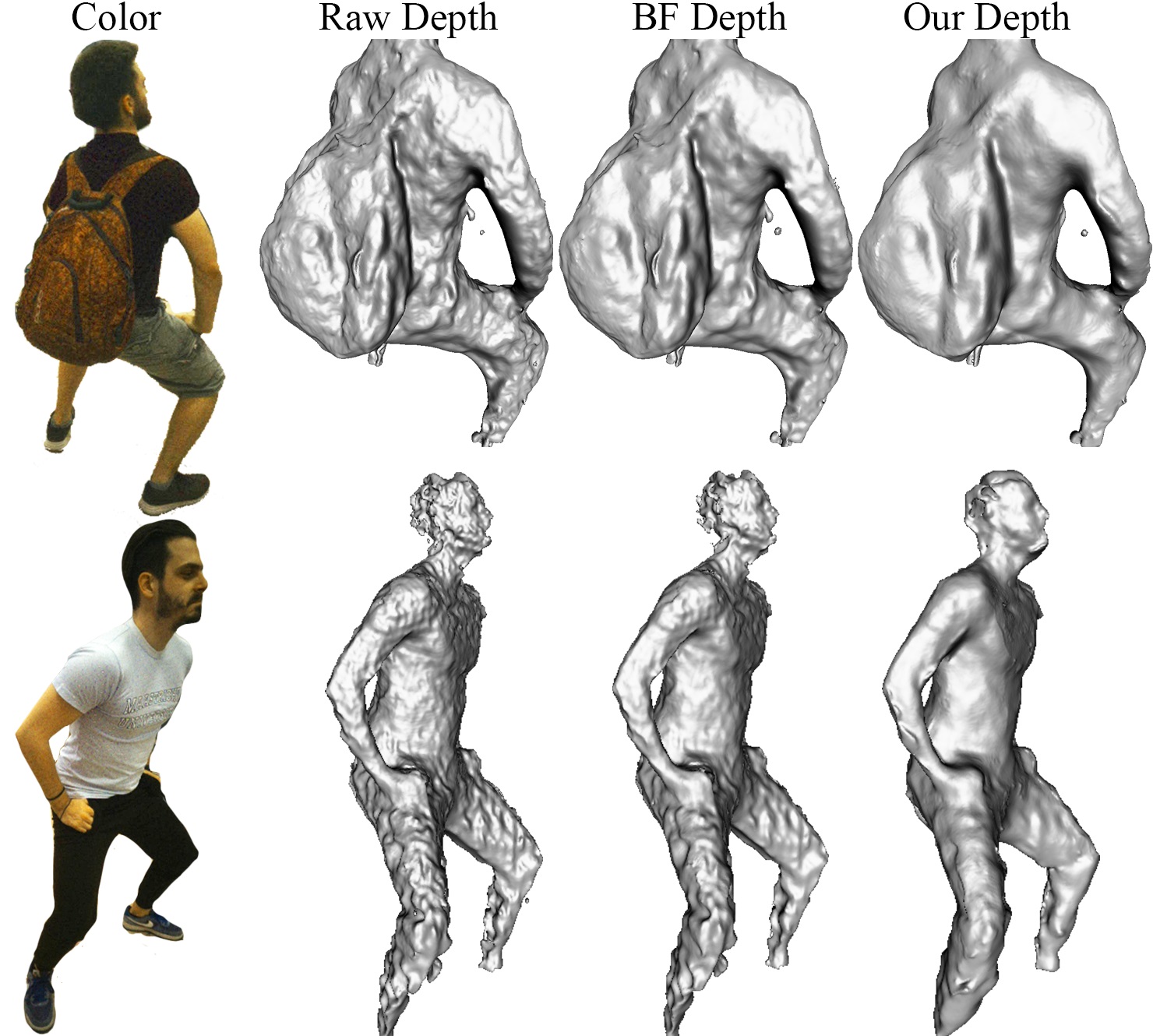VCL3D / Deepdepthdenoising
Programming Languages
Labels
Projects that are alternatives of or similar to Deepdepthdenoising
Self-supervised Deep Depth Denoising
Created by Vladimiros Sterzentsenko*, Leonidas Saroglou*, Anargyros Chatzitofis*, Spyridon Thermos*, Nikolaos Zioulis*, Alexandros Doumanoglou, Dimitrios Zarpalas, and Petros Daras from the Visual Computing Lab @ CERTH
About this repo
This repo includes the training and evaluation scripts for the fully convolutional autoencoder presented in our paper "Self-Supervised Deep Depth Denoising" (to appear in ICCV 2019). The autoencoder is trained in a self-supervised manner, exploiting RGB-D data captured by Intel RealSense D415 sensors. During inference, the model is used for depthmap denoising, without the need of RGB data.
Installation
The code has been tested with the following setup:
- Pytorch 1.0.1
- Python 3.7.2
- CUDA 9.1
- Visdom
Model Architecture
Encoder: 9 CONV layers, input is downsampled 3 times prior to the latent space, number of channels doubled after each downsampling.
Bottleneck: 2 residual blocks, ELU-CONV-ELU-CONV structure, pre-activation.
Decoder: 9 CONV layers, input is upsampled 3 times using interpolation followed by a CONV layer.
Train
To see the available training parameters:
python train.py -h
Training example:
python train.py --batchsize 2 --epochs 20 --lr 0.00002 --visdom --visdom_iters 500 --disp_iters 10 --train_path /path/to/train/set
Inference
The weights of pretrained models can be downloaded from here:
- ddd --> trained with multi-view supervision (as presented in the paper):
- ddd_ae --> same model architecture, no multi-view supervision (for comparison purposes)
To denoise a RealSense D415 depth sample using a pretrained model:
python inference.py --model_path /path/to/pretrained/model --input_path /path/to/noisy/sample --output_path /path/to/save/denoised/sample
In order to save the input (noisy) and the output (denoised) samples as pointclouds add the following flag to the inference script execution:
--pointclouds True
To denoise a sample using the pretrained autoencoder (same model trained without splatting) add the following flag to the inference script (and make sure you load the "ddd_ae" model):
--autoencoder True
Benchmarking: the mean inference time on a GeForce GTX 1080 GPU is 11ms.
Citation
If you use this code and/or models, please cite the following:
@inproceedings{sterzentsenko2019denoising,
author = "Vladimiros Sterzentsenko and Leonidas Saroglou and Anargyros Chatzitofis and Spyridon Thermos and Nikolaos Zioulis and Alexandros Doumanoglou and Dimitrios Zarpalas and Petros Daras",
title = "Self-Supervised Deep Depth Denoising",
booktitle = "ICCV",
year = "2019"
}
License
Our code is released under MIT License (see LICENSE file for details)





